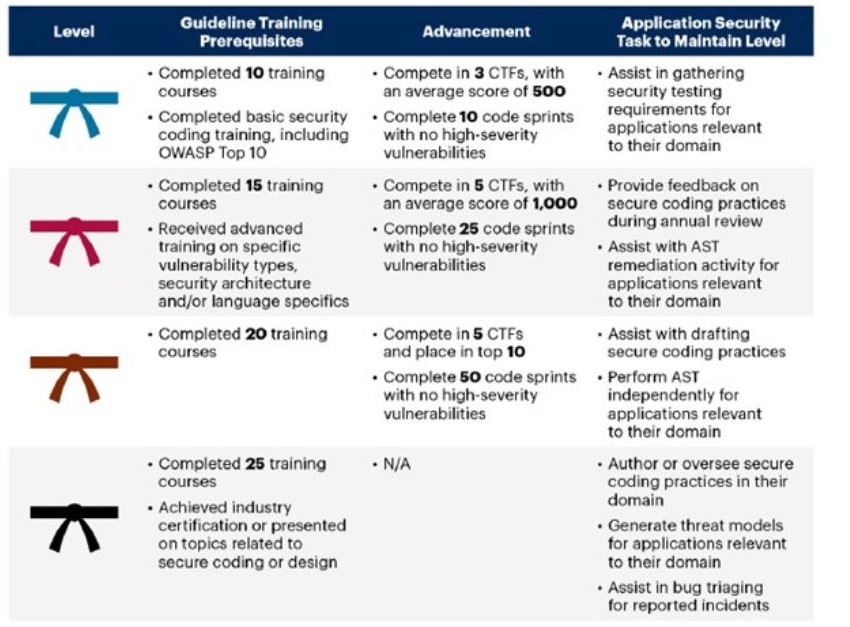Security should be everyone’s responsibility in an organization, but it’s growing in importance for DevOps environments. A breach or attack can be discovered at any point in the pipeline and so everyone involved in the process should at least have some security awareness. However, security processes and teams are often isolated from the rest of the pipeline resulting in a disconnect between developers and security experts, meaning many find understanding and security processes technically challenging.
In this blog, we’ll explore the skills gap which exists within DevOps and how a security coaching program can assist in addressing the issue as well as improving organizational security infrastructure.
The Security Skill Gap in DevOps Teams
Increasingly complex regulations around security and a threat landscape that is ever growing in sophistication also add to this problem. Developers, without proper security training, will struggle to factor these challenges into their code, while IT teams and security experts face increased workload and pressure on their teams. This skill gap is nothing new in DevOps, and it is only in recent years that attitudes are changing about the place of security in DevOps environments. The ongoing ‘shift left’ to security is building in traction, and more organizations are adopting an integrated security approach, with Gartner predicting that DevSecOps practices are going to be embedded into 85% of product development teams – a significant increase from 30% in 2022.
However, the skill gap in DevOps environments poses an additional challenge for organizations looking to transition to DevSecOps where security is heavily integrated into product development and developers bare equal responsibility. The positive news is that, by addressing the knowledge gap between development and security, is that many of the actions that organizations will need to take will also vastly improve their security infrastructure and address many other security challenges too.
Introducing a Security Coaching Program
Security Coaching Programs are an effective way to address the skills gap when transitioning to DevSecOps environments as it directly engages developers with security processes and best practices, and recruits those with an interest in security to act as a security ambassador for their team.
Security coaches work with IT teams in DevOps environments to create goals for security and provide guidance to the development team. This way, developers can build a growing awareness and understanding of how to develop an effective security structure from within the pipeline, as well as staying up to date with emerging threats and vulnerabilities and streamlining security management. It creates confidence within the development team by establishing a collaborative culture while embedding the understanding that security should be prioritized and is everyone’s responsibility.
Here are three ways to implement an effective security coaching program.
1. Integrated Security Planning
A good security posture when transitioning to DevSecOps processes starts at the beginning. DevOps environments operating on a Continuous Integration/Continuous Employment (CI/CD) pipeline enables agile testing and rapid deployment with security processes often tagged on the end. DevSecOps environments function in much the same way except that security is integrated into the whole workflow.
This transition can add some strain to the developers' workload but can be remediated with a security coaching program. DevSecOps environments can support the introduction of a security coaching program by adopting an integrated approach to security. Organizations should factor this into their planning from the beginning, to create a collaborative environment:
- Auditing and Planning: This should take place in the planning phase of product development and include an assessment of key requirements within the DevOps process and the organization. Here, management should look to prioritize key components to address, including regulation compliance, threat-model assessments detailing potential vulnerabilities, and security training requirements for developers. This provides IT teams with the data that they need to begin training security coaches.
- Introduce a Framework: Using information drawn from the security audit, organizations should create a security framework that can be followed whenever a vulnerability or threat is discovered and can be an especially vital resource in the event of zero-day vulnerabilities.
- Involve Developers from Day One: Developers, along with IT teams and security experts, must all be involved in the planning from day one. As security experts work with the organization to develop a framework, involving developers in the process allows them to engage in and build a crucial understanding of security that they can then factor into the development pipeline. This will also create an early opportunity to spot developers with a keen interest and knowledge of security to recruit into the coaching program.
- Create Goals: Creating goals for newly recruited coaches will provide alignment between IT and development teams when addressing potential security gaps in the software and response times to vulnerability remediation should they arise. When addressing security concerns, everyone has a part to play, so it is of vital importance that each team is coordinated when these concerns appear.
2. Education and Empowerment
Security coaches also act as ambassadors to developers’ security education. Ensuring developers and their security coaches are provided with high-level education and regular training does not just help them to spot and resolve vulnerabilities, it is an empowerment tool that will allow each team member to respond to issues quickly and effectively as they come up, rather than leaving them to further along in the pipeline. Empowering developers in this way also establishes trust, further facilitating strong communication between teams, solidifying collaboration as an invaluable component of the pipeline. Steps to empower developers through the use of a coaching program should include the following:
- Instill a Collaborative Culture Based on Trust: A security coaching program relies on developers being empowered to identify and respond to vulnerabilities found at any point in the pipeline. Security coaches will act as a gateway for collaboration between IT teams and developers where developers may be the first point of contact with a vulnerability but have experts on hand to assist with assessment and response, including updating software with vulnerability data going forward. Creating this collaborative relationship between developers and experts relies on trust between the two teams, which can be created with a workflow that outlines how developers should respond when a vulnerability arises and who the first port of call should be in case of an incident. Ensuring that developers are guided through this process by experts and that both teams are on the same page will empower developers to react to an incident with confidence.
- Ongoing Training: Recruiting developers with a keen interest and some understanding of security is only one part of the equation. Developers who are not part of the program themselves should also receive ongoing training that is guided and reaffirmed by the security coaches, including open discussions about concerns that developers may have and provide the opportunity to address any stress that may arise from new responsibilities in the transition toward a DevSecOps environment.

- Feedback Effectiveness with Rewards: Meanwhile, security coaches themselves will need guidance from security experts; this can be done by awarding security coaches with career aligned incentives. This can include the provision of training days at security specified conferences, certification sponsorship, greater responsibilities within their role and simply communicating positive feedback when issues are effectively managed, both individually and to the wider business.
Read more about Security Coaching programs with complimentary access to the Gartner report
3. Automation: an Essential Piece in Bridging the DevSecOps Skills Gap
Automation is an effective tool when solving the skills gap as organizations transition to DevSecOps practices, alleviating pains while developers acquire new skills and responsibilities. During the planning and creation phases early in the workflow, automated certificate management platforms can reduce the strain before production begins. By reducing the overwhelming feeling from certificate management, resources can be focused on further enhancing security.
Meanwhile, as security coaches are being recruited and developers trained with new skills, automating elements of the DevSecOps environment will help reduce the learning gap as many of the security processes can be overseen without requiring complex manual intervention. Automation tools provide scalability and centralized visibility of certificates implemented within the DevSecOps environment, ensuring that when it comes to security, everyone is on the same page and can react quickly while learning and managing new skills.
Automation tools aren’t a short-term solution as security coaches and developers improve their expertise, it is also a long-term solution that generally improves overall security infrastructure and efficiency. By using automated tools, protocols and integrations to help to manage certificates more effectively can help protect secrets, keys, and assets at every stage of the toolchain with little manual intervention. Automation tools also enable DevSecOps environments to keep up with compliance, by ensuring the validity of certificates, protecting data and having notification and alert systems in place when something in the pipeline falls below industry standards.
Automate your pipeline with our expert team
Automation works alongside a security coaching program while IT teams develop more immediate issues within developer knowledge gaps and empowerment. Automated tools also facilitate communication in the business as many of them are centralized and provide an element of standardization within the DevSecOps environment. Alerts for vulnerabilities or outdated certificates also allow developers and IT teams to remediate issues quickly and collaboratively.
A security coaching program alone could still help address issues created by the skill gap in DevSecOps, but the pipeline and successful product development are defined by and depend on efficiency, seamless integration and collaboration and speedy output. It is difficult to tackle these challenges using only manual resources. Automated tools can help close this gap more quickly, while creating effective security workflows and allowing security coaches to focus on the growth and development of their team.
Automate and Close the Gap Today
By embracing the potential that automation offers, it shouldn’t add complexity to your plate. By working with GlobalSign, we can guide you every step of the way to discover what automation tools you need to help gain real-time visibility, improve efficiency and offer scalability as your organization grows.
Gartner, 3 Essential Steps to Enable Security in DevOps 1 March 2023, Daniel Betts Et Al. GARTNER is a registered trademark and service mark of Gartner, Inc. and/or its affiliates in the U.S. and internationally and is used herein with permission. All rights reserved.








